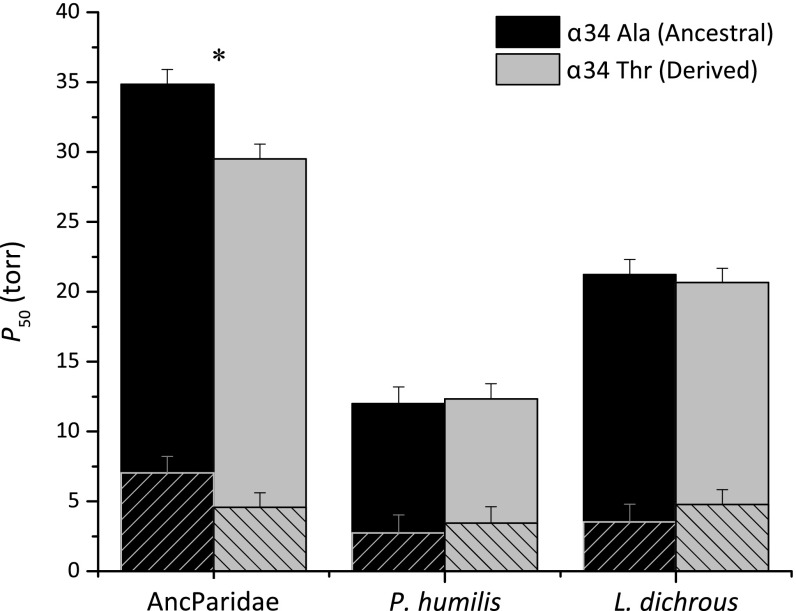Fig. 4.
O2 affinities of recombinantly expressed Hbs representing wild-type genotypes of Parus humilis and Lophophanes dichrous and the reconstructed genotype of their most recent common ancestor AncParidae. Site-directed mutagenesis experiments revealed that αAA34T produces a significant affinity-enhancing effect on the ancestral background (AncParidae), as indicated by the reduction in P50, but does not completely recapitulate the evolved increases in Hb–O2 affinity in Parus humilis or Lophophanes dichrous. Cross-hatched and solid bars show P50 values in the absence (stripped) and presence of anionic cofactors, respectively. Mutational reversions (αAA34T) on the wild-type backgrounds of Parus humilis and Lophophanes dichrous did not produce a symmetrical, affinity-reducing effect. The asterisk denotes a statistically significant difference (P < 0.05) in the presence of KCl + IHP.

